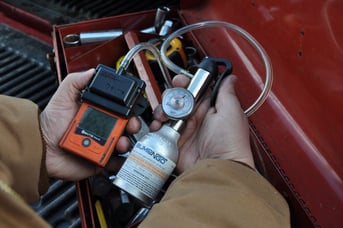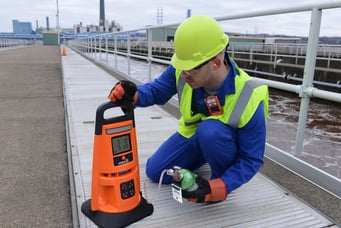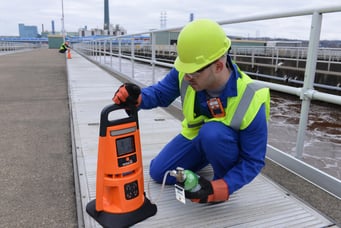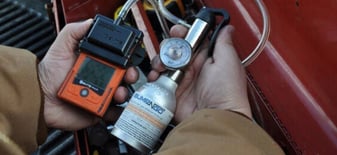 Gas detectors play a crucial role in ensuring the health and safety of workers across various industries. Gas monitors alert us to the presence of dangerous gases and help prevent potentially lethal events. However, to ensure their effectiveness, it is vital to regularly perform a gas monitor bump test. Making bump tests a habit can save lives and maintain workplace safety.
Gas detectors play a crucial role in ensuring the health and safety of workers across various industries. Gas monitors alert us to the presence of dangerous gases and help prevent potentially lethal events. However, to ensure their effectiveness, it is vital to regularly perform a gas monitor bump test. Making bump tests a habit can save lives and maintain workplace safety.
What is a Gas Monitor Bump Test?
A gas monitor bump test, also known as a “functional test," is a simple process that involves exposing a gas monitor to a known, expected concentration of gas that is greater than your alarm set points. If everything works as expected, the gas monitor will go into alarm. Bump testing is quick, easy, and the only way to ensure that a gas monitor’s sensors and alarms are working properly.
Bump testing gas monitors is like checking your flashlights before relying on them in the dark woods on a camping trip. If the flashlight does not turn on, you know that the one you have can’t help you. Gas monitors are no different, and the first thing you should do before using it is to make sure it works. Without bump testing a gas monitor, you can’t know that it will perform the way you need it to. If the bump test fails, you know that you’ll need to troubleshoot.
That said, bump tests do not check for accuracy. To check for accuracy, you’ll need to calibrate your gas monitor.
The Importance of Bump Testing Gas Detectors
Regularly performing gas monitor bump tests is not only a safety best practice but also a requirement in many industries. This is because gas detectors' sensors can drift over time due to environmental factors, leading to inaccurate readings. Sensor drift can occur due to monitors being dropped often, exposed to extreme conditions (temperatures, humidity, moisture, dust, mud, sludge), and many other reasons. Moisture and dust can clog filters, while mud or sludge can block a sensor from detecting any gas at all. These are all common in today’s work, so manufacturers recommend bump testing gas monitors before each use.
Additionally, sensors for combustible and toxic hazards will typically read zero in ambient environments – whether they’re functioning or not. The only way to know if these gas monitors’ sensors will respond is by exposing them to gas in a bump test.
Creating a Habit of Bump Testing
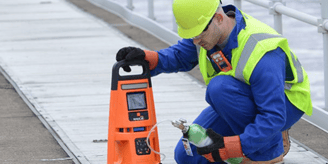 Making bump testing a habit is as simple as incorporating it into your routine. Here are some steps to help make this crucial safety practice second nature:
Making bump testing a habit is as simple as incorporating it into your routine. Here are some steps to help make this crucial safety practice second nature:
- Set a Schedule: Determine how often you need to bump test your gas detectors. The frequency can depend on the type of gas detector, the environment it's used in, and the manufacturer's recommendations. Industrial Scientific, for instance, suggests before each use.
- Train Your Team: Ensure that all users know how to perform a bump test correctly. Regular training sessions can help reinforce this knowledge and ensure the process is carried out accurately and consistently; however, it can often be difficult for safety managers to find time to train users. Luckily, gas detection companies offer a wide array of training resources. Trainers can travel to customer locations for on-site training to give a more hands-on approach. Alternatively, gas detection companies post videos, articles, and many other resources to help you learn how to use each gas monitor safely and effectively.
- Use Automated Systems: Some modern gas detectors come with docking stations that automatically perform, record, and remind users about bump tests, as well as proactively scan for possible failures in each gas monitor. When paired with a comprehensive safety management software, docking stations can help automatically keep records as well. This can make the process even more effortless and ensure it's never overlooked.
- Keep Records: Maintaining a record of each test is a critical part of the bump test process. This can also help you track the performance of your gas monitors over time and provide necessary evident of compliance with safety regulations for OSHA and other regulatory bodies. By utilizing the iNet safety platform, however, you can eliminate paper logs for gas detection data and store it all in one, easy-to-access digital library full of bump and calibration certifications and more. You can even set up alerts that users are taking the correct action every day – including being notified when a monitor is being used without a bump test to ensure workers are maintaining safety standards.
Overall, regularly performing gas monitor bump tests is critical in maintaining safety standards at your workplace. By making bump tests a habit, you can ensure both your gas detectors are always in optimal working conditions and that everyone who relies on gas detectors is well protected when it matters most.
